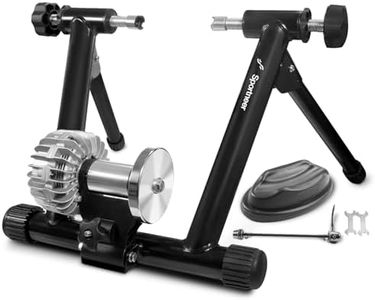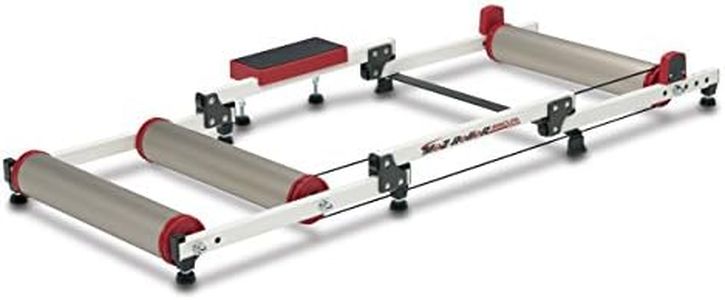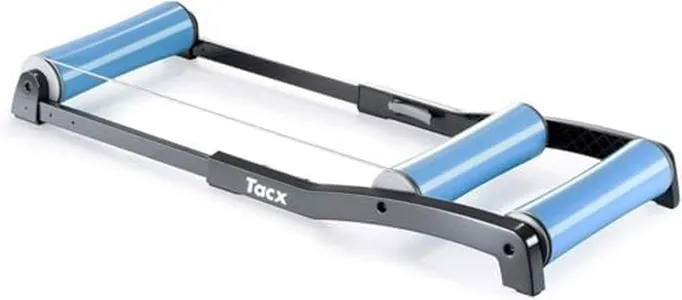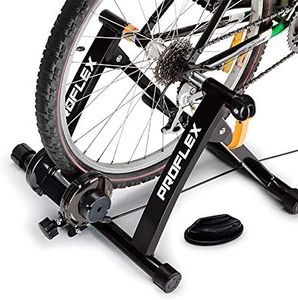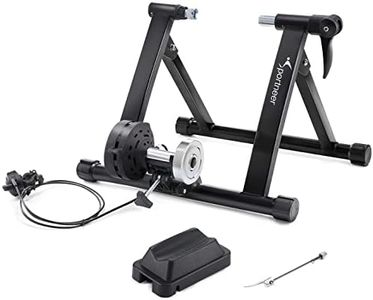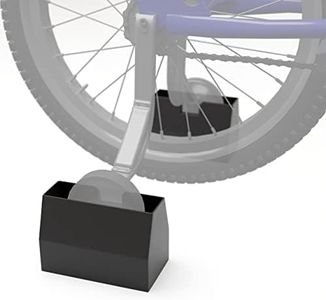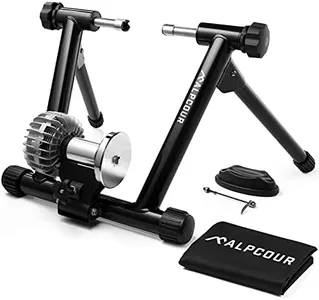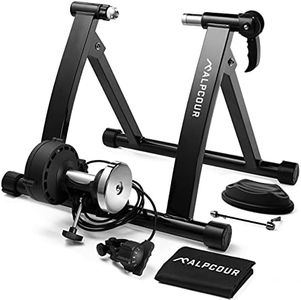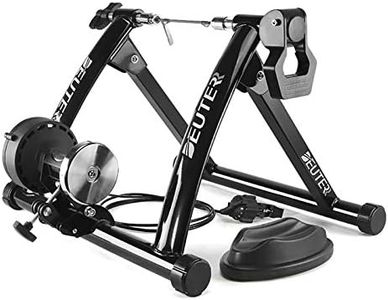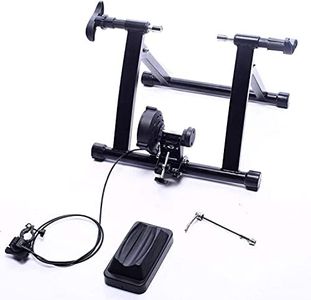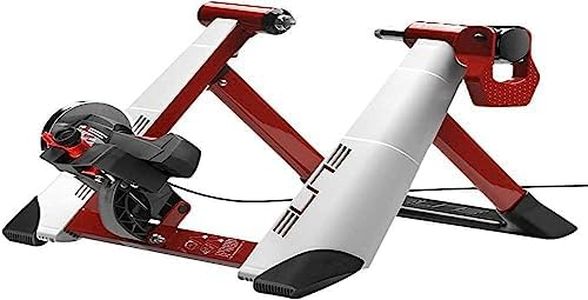We Use CookiesWe use cookies to enhance the security, performance,
functionality and for analytical and promotional activities. By continuing to browse this site you
are agreeing to our privacy policy
10 Best Bike Trainer Stands
From leading brands and best sellers available on the web.Buying Guide for the Best Bike Trainer Stands
Buying a bike trainer stand is a great decision if you want to cycle indoors, especially during bad weather or when you want controlled workouts. The right trainer stand can turn your regular bike into a stationary fitness tool. When shopping, it's important to think about how much you're going to ride, what you want to achieve from your sessions, and how much space and noise you can handle. Picking the best trainer for your needs involves focusing on a few key features and understanding what each means for your ride experience.Resistance TypeThis refers to how the trainer creates resistance against your pedaling, which affects the feel and challenge of your ride. Main types are wind, magnetic, and fluid resistance. Wind trainers tend to be noisier and get harder to pedal the faster you go, which can make workouts simple but loud. Magnetic trainers are quieter and allow you to adjust intensity settings, making them versatile for different workout styles. Fluid trainers provide a smooth and realistic road-like feel and adapt resistance automatically but can be pricier. If you want a quiet and realistic feel, go for fluid. If you're after simplicity and cost-efficiency and don't mind noise, wind is fine. Magnetic is a balanced middle ground for many users.
CompatibilityCompatibility is about whether your bike will fit securely on the trainer stand. Some stands work only with road bikes, others for both road and mountain bikes, and some might require adapters for different axle types. Before buying, check what wheel sizes, tire widths, and axle types your trainer can fit. If your bike is unusual or has unique features, make sure the trainer stand supports bicycles like yours. Always match your bike specs with the trainer’s supported list to ensure you don’t end up with a stand you can’t use.
Stability and Build QualityThis is about how sturdy the trainer is while holding your bike and how long it will last. More stable stands tend to have wider bases and robust frames so they don’t wobble or tip during intense sprints. Build quality is about materials and construction—good-quality trainers are typically made of steel and have solid welds. Heavier and wider models generally offer more stability but are less portable. If you plan on riding hard or stand up on pedals, or if you want something that will last several years, prioritize stability and strong build quality.
Noise LevelNoise level refers to how much sound the trainer produces when in use. Trainers with wind resistance are typically quite loud, while fluid and magnetic trainers are quieter and better suited to shared or noise-sensitive spaces. If you live in an apartment, train early in the morning, or want to watch TV while riding, quieter trainers will make life easier. If noise is not an issue for you, then this factor can be less important.
Portability and StorageThis specification looks at how easy it is to fold up and move the trainer when you're not using it. Some trainer stands are lightweight and foldable, meaning you can store them away in a closet or transport them easily. Others are heavier with fixed frames, which are better for permanent setups. If your workout space is limited or you need to put the trainer away regularly, opt for a more portable design. If you have a dedicated area, a stable, heavier stand may be better.
Adjustability and FeaturesAdjustability deals with how easily you can change resistance, set up the stand's height, or adjust for different bike sizes. Some trainers offer on-the-fly resistance changes, while others require manual adjustment. Extra features may include smart connectivity for tracking workouts or integration with cycling apps. If you want varied workouts or plan to use training apps, look for these adjustable and smart features. If you’re after a simple, straightforward ride, basic models may be enough.
